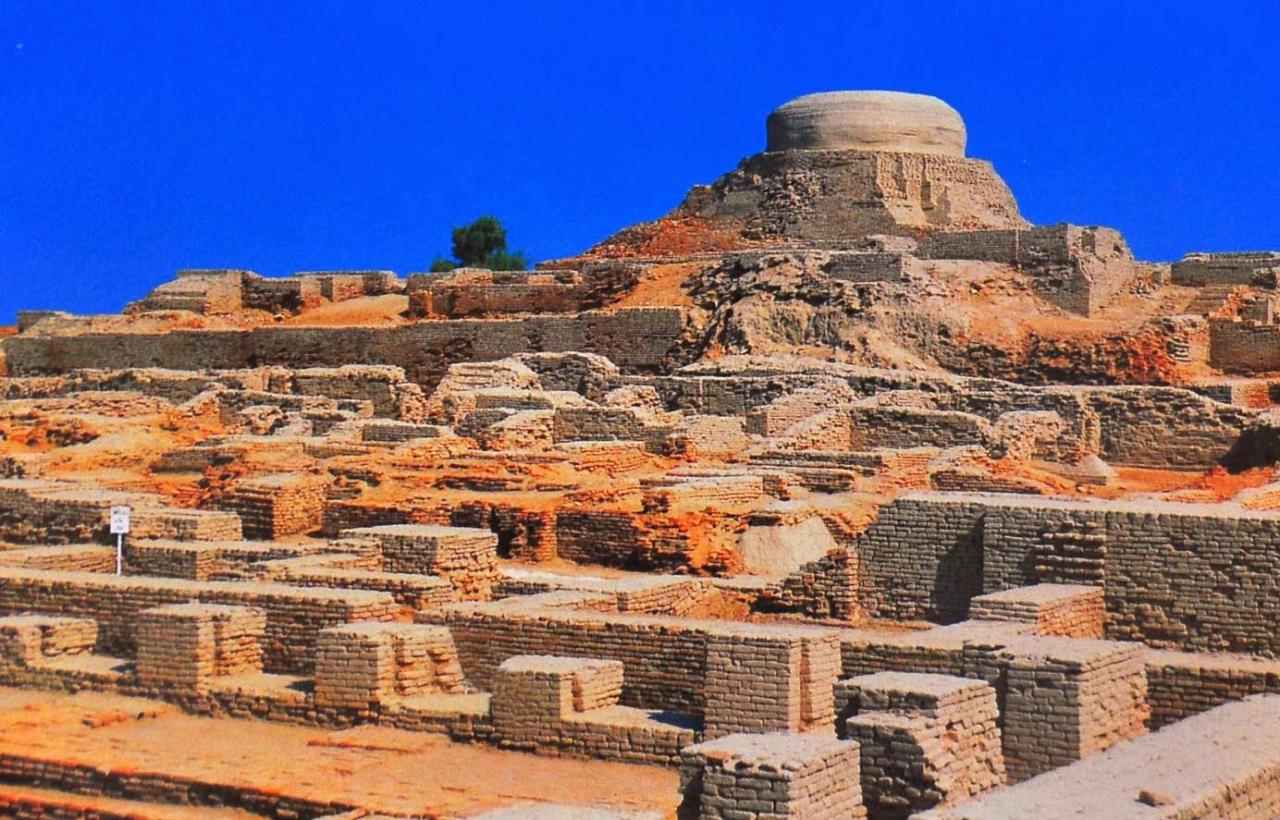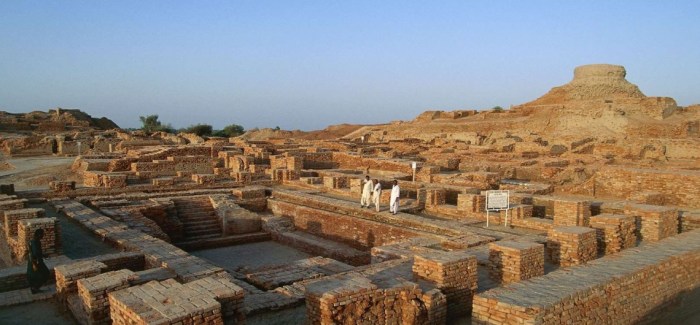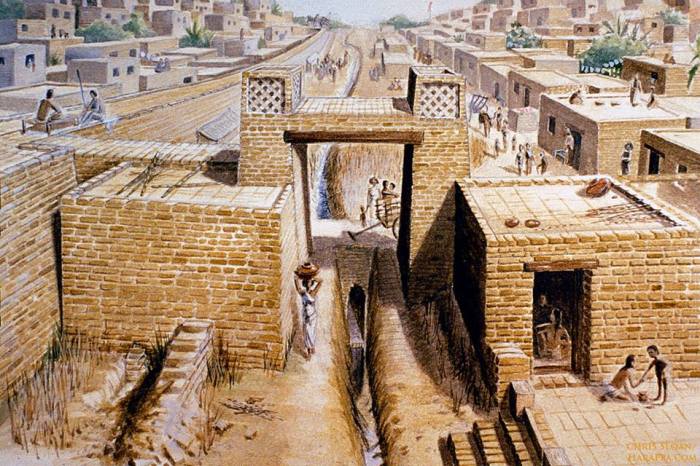Name two conclusions that have been drawn about Harappan civilization, an ancient civilization that flourished in the Indus Valley region from 2600 to 1900 BCE. The Harappan Civilization was one of the world’s first urban civilizations, and its legacy continues to influence South Asian culture today.
One conclusion that has been drawn about Harappan civilization is that it was a highly advanced society. The Harappans developed a written language, a system of weights and measures, and a sophisticated system of urban planning. They also had a complex social structure and a thriving economy.
Theories Regarding the Demise of the Harappan Civilization: Name Two Conclusions That Have Been Drawn About Harappan Civilization
The decline of the Harappan Civilization remains a topic of scholarly debate, with various theories proposed to explain its demise. One theory suggests that environmental changes, such as the drying up of the Saraswati River or the onset of droughts, may have led to the collapse of the civilization.
Another theory posits that natural disasters, such as earthquakes or floods, could have devastated the Harappan cities and disrupted their infrastructure. A third theory proposes that invasions by nomadic tribes from Central Asia may have overwhelmed the Harappan defenses and contributed to their downfall.
Each of these theories has its own strengths and weaknesses. The environmental change theory is supported by evidence of a decline in rainfall and the drying up of rivers during the period of the Harappan decline. However, it is difficult to determine whether these changes were the primary cause of the civilization’s collapse or simply contributing factors.
The natural disaster theory is supported by the presence of geological evidence for earthquakes and floods in the Harappan region. However, it is difficult to determine whether these events were widespread enough to cause the collapse of the entire civilization.
The invasion theory is supported by the presence of weapons and fortifications in Harappan cities. However, it is difficult to determine whether these were used in large-scale invasions or simply in local conflicts.
Ultimately, the decline of the Harappan Civilization is likely to have been the result of a combination of factors, including environmental changes, natural disasters, and invasions. However, the relative importance of each of these factors remains a subject of ongoing debate.
Cultural Influences of the Harappan Civilization

The Harappan Civilization left a lasting legacy on Indian culture. Many of the cultural practices and beliefs of the Harappan people continued to be practiced in later Indian civilizations, and some are still practiced today.
One of the most important cultural influences of the Harappan Civilization was its emphasis on urban planning. The Harappans were the first people in South Asia to build cities, and their cities were remarkably well-planned and organized.
The Harappans also had a highly developed system of writing, which was used for both administrative and religious purposes. This system of writing was later adopted by other Indian civilizations, and it eventually evolved into the modern Devanagari script.
The Harappans were also skilled artisans, and their pottery, jewelry, and other crafts were highly prized. These crafts continued to be produced in later Indian civilizations, and some of the designs used by the Harappans are still used today.
In addition to these specific cultural influences, the Harappan Civilization also had a more general influence on Indian culture. The Harappans were the first people in South Asia to develop a complex civilization, and their achievements laid the foundation for the development of later Indian civilizations.
Technological Advancements of the Harappan Civilization

The Harappan Civilization was one of the most technologically advanced civilizations of its time. The Harappans were the first people in South Asia to develop a system of writing, and they also made significant advances in urban planning, water management, and craft production.
One of the most impressive technological achievements of the Harappans was their system of urban planning. The Harappan cities were laid out in a grid pattern, with streets that were wide and straight. The cities also had a well-developed system of drainage and sanitation.
The Harappans were also skilled engineers, and they developed a number of innovative water management systems. These systems included dams, reservoirs, and canals, which were used to store and distribute water for irrigation and drinking.
The Harappans were also skilled craftspeople, and they produced a wide range of goods, including pottery, jewelry, and textiles. The Harappans were particularly skilled at making seals, which were used to authenticate documents and to mark ownership of goods.
The technological achievements of the Harappan Civilization were remarkable, and they laid the foundation for the development of later Indian civilizations.
Socio-Economic Organization of the Harappan Civilization
The Harappan Civilization was a complex and highly organized society. The Harappans had a social hierarchy, with a ruling elite at the top and a variety of social classes below them. The Harappans also had a well-developed economic system, which included trade, agriculture, and craft production.
The Harappan social hierarchy was based on occupation. The ruling elite was composed of priests, warriors, and merchants. The middle class was composed of artisans, craftsmen, and farmers. The lower class was composed of laborers and servants.
The Harappans had a well-developed economic system, which included trade, agriculture, and craft production. The Harappans traded with other civilizations in the region, and they also exported goods to distant lands. The Harappans were also skilled farmers, and they grew a variety of crops, including wheat, barley, and cotton.
The Harappan Civilization was a prosperous and successful civilization. The Harappans had a complex social and economic system, and they made significant advances in technology and culture.
Artistic Expressions of the Harappan Civilization

The Harappan Civilization produced a wide range of artistic expressions, including pottery, sculpture, and seals. Harappan pottery is particularly notable for its fine craftsmanship and its distinctive designs. Harappan sculptures are also well-crafted, and they often depict animals, humans, and gods.
Harappan seals are perhaps the most famous examples of Harappan art. Seals were used to authenticate documents and to mark ownership of goods. Harappan seals are often made of steatite, and they are typically carved with intricate designs.
The artistic expressions of the Harappan Civilization provide valuable insights into the culture and beliefs of the Harappan people. Harappan art is often naturalistic and realistic, and it often depicts scenes from everyday life. Harappan art also has a strong religious component, and many of the designs used in Harappan art are thought to have religious significance.
International Connections of the Harappan Civilization
The Harappan Civilization had extensive trade connections with other civilizations in the region. The Harappans traded with Mesopotamia, Persia, and Central Asia. The Harappans exported a variety of goods, including pottery, jewelry, and textiles. They also imported goods from other civilizations, such as copper, tin, and lapis lazuli.
The Harappan Civilization also had cultural connections with other civilizations in the region. The Harappans shared many cultural similarities with the Mesopotamians, and some scholars believe that the Harappan Civilization may have been influenced by Mesopotamian culture.
The Harappan Civilization was a major player in the international trade networks of the ancient world. The Harappans had extensive trade connections with other civilizations in the region, and they also had cultural connections with other civilizations.
Essential FAQs
What is the Harappan Civilization?
The Harappan Civilization was an ancient civilization that flourished in the Indus Valley region from 2600 to 1900 BCE.
What are some of the conclusions that have been drawn about Harappan civilization?
One conclusion that has been drawn about Harappan civilization is that it was a highly advanced society. Another conclusion that has been drawn is that it was a peaceful society.
What are some of the key features of Harappan civilization?
Some of the key features of Harappan civilization include its written language, its system of weights and measures, its sophisticated system of urban planning, its complex social structure, and its thriving economy.